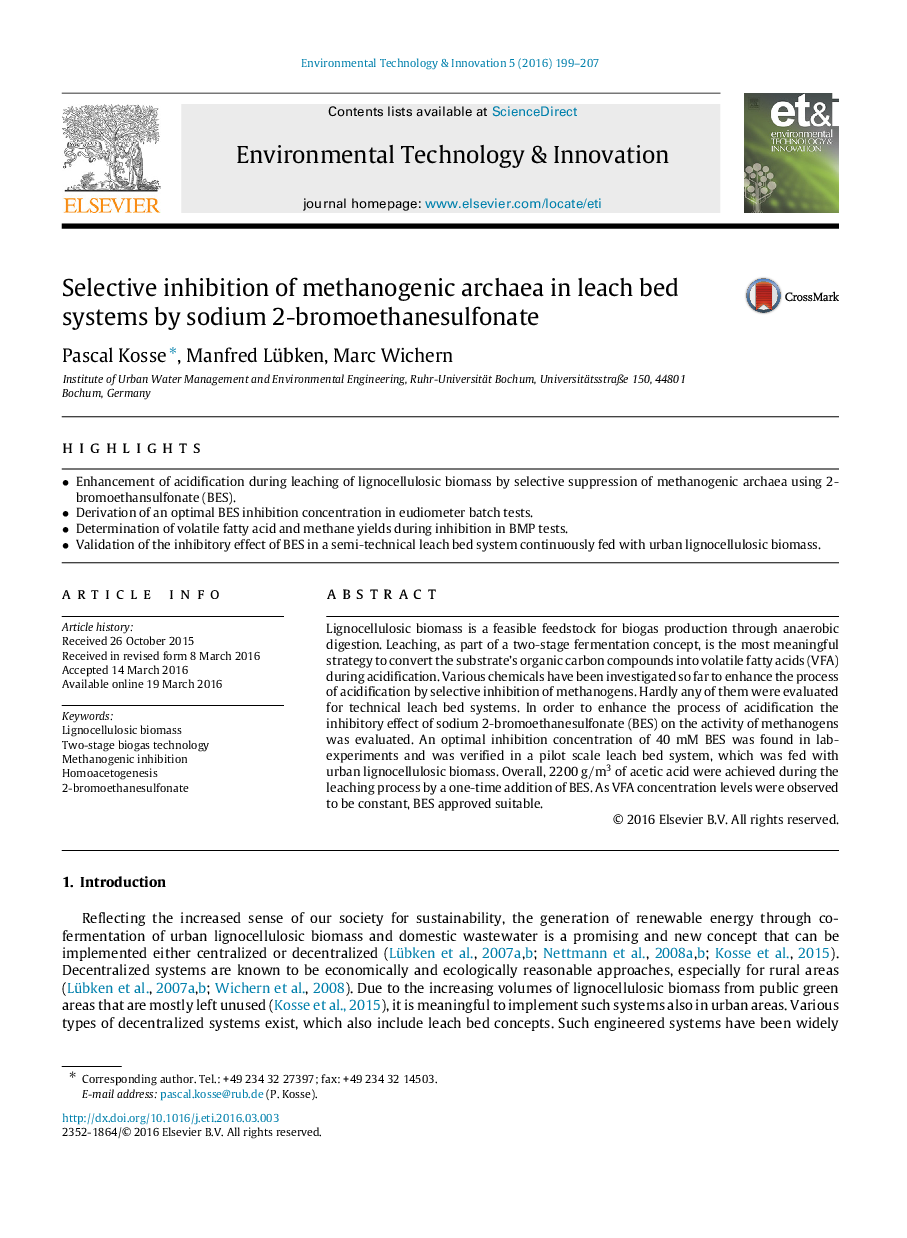| Article ID | Journal | Published Year | Pages | File Type |
|---|---|---|---|---|
| 4428207 | Environmental Technology & Innovation | 2016 | 9 Pages |
•Enhancement of acidification during leaching of lignocellulosic biomass by selective suppression of methanogenic archaea using 2-bromoethansulfonate (BES).•Derivation of an optimal BES inhibition concentration in eudiometer batch tests.•Determination of volatile fatty acid and methane yields during inhibition in BMP tests.•Validation of the inhibitory effect of BES in a semi-technical leach bed system continuously fed with urban lignocellulosic biomass.
Lignocellulosic biomass is a feasible feedstock for biogas production through anaerobic digestion. Leaching, as part of a two-stage fermentation concept, is the most meaningful strategy to convert the substrate’s organic carbon compounds into volatile fatty acids (VFA) during acidification. Various chemicals have been investigated so far to enhance the process of acidification by selective inhibition of methanogens. Hardly any of them were evaluated for technical leach bed systems. In order to enhance the process of acidification the inhibitory effect of sodium 2-bromoethanesulfonate (BES) on the activity of methanogens was evaluated. An optimal inhibition concentration of 40 mM BES was found in lab-experiments and was verified in a pilot scale leach bed system, which was fed with urban lignocellulosic biomass. Overall, 2200 g/m3 of acetic acid were achieved during the leaching process by a one-time addition of BES. As VFA concentration levels were observed to be constant, BES approved suitable.
